Every day is a step forward along the road of your unique story. No person in the history of the world has lived the life you’re living, and no creature in the cosmos has weaved a tale quite like the one you are writing now.
Life doesn’t really have any goal posts: no end zone and no finish line to cross and then reminisce about at a later date. Sure, some people like to seek out points to look back and remember the good times. But part of truly understanding why we are here is knowing that every minute is part of our own individual stories – and that life is about living every second until that point where others continue in your stead.
We are here to experience life, and some even say we are here so the universe can know itself. This is why I think that so many strive to explore, to reach the highest heights and the deepest depths and if possible touch the infinite of the universe.
Every step, every adventure, carries you down the road of your story, and that road is one small part of an immense tale of which we will never read the epilogue.
Each action has its part to play: every tragedy, triumph, and tenderness nestled between the excruciatingly mundane infuses the great narrative with richness and authenticity that comes only from this strange chaos of existence.
These words might sound heady and wrought with arrogance or elitism, but I genuinely find wonder in existence itself, awe in the grand canvas of the world and the endlessness of the expanding universe. For that reason, the exploration of outer space is as meaningful to me as scripture to a disciple, as the mantra to a Vedic, and as BASIC to a programmer.
It follows, then, that anything that seeks to commemorate that exploration has a good chance to fall into a special place in my heart.
At Baselworld 2018, Omega took another step forward along the road of its story with a release commemorating space exploration in a way different than it has done before: the Speedmaster Dark Side Of The Moon Apollo 8 pays tribute to the crew that was the first to actually see the “dark” side of the moon.
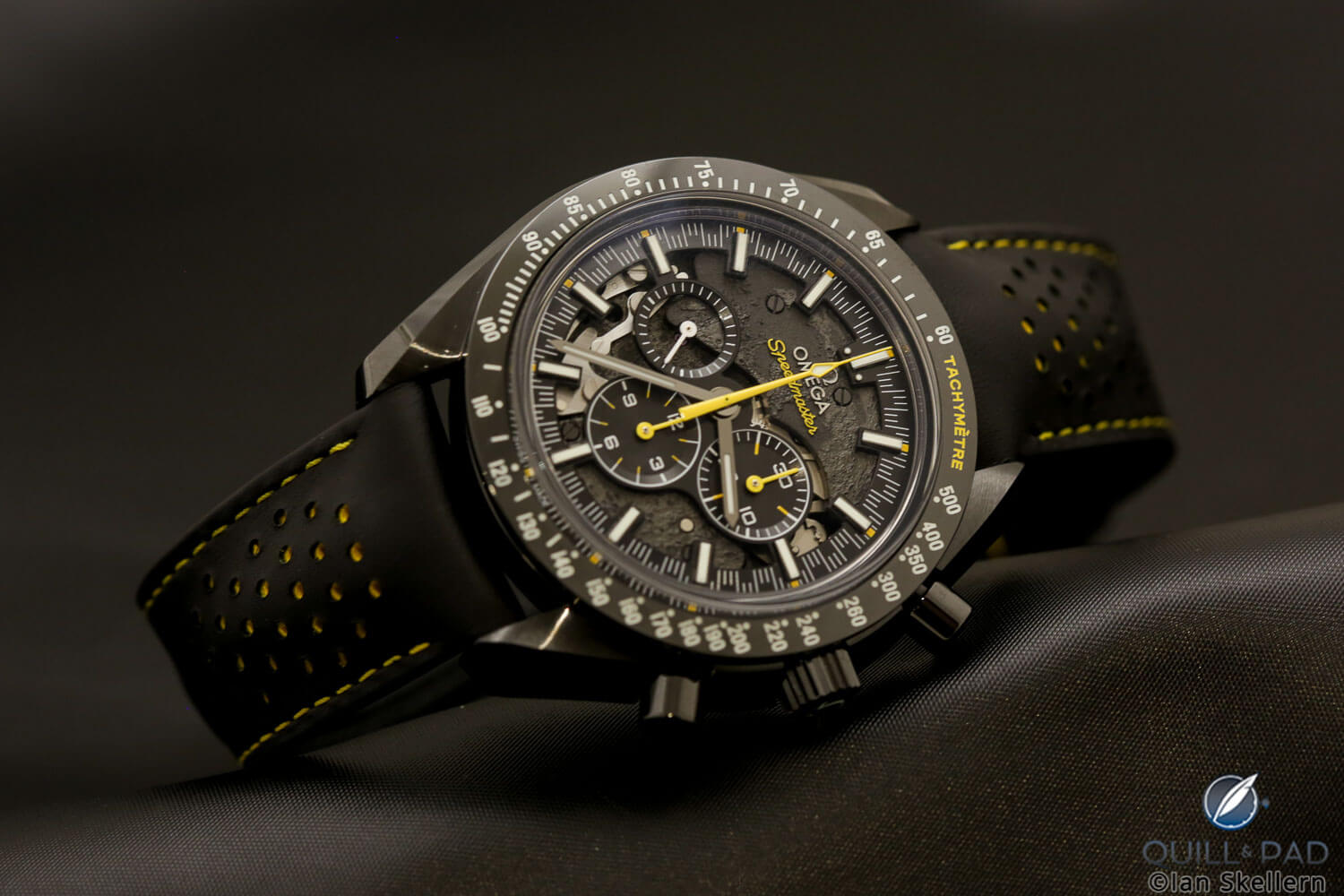
Omega Speedmaster Dark Side Of The Moon Apollo 8
The Apollo 8 is technically an iteration of the original Speedmaster Dark Side Of The Moon, but it feels like something different.
Pivoting direction . . . from the moon to the wrist
The Apollo 8 edition of the Omega Speedmaster Dark Side Of The Moon (DSOTM) didn’t simply seek to celebrate vintage Speedmaster watches or the general connection with space, but instead chose to commemorate a specific Apollo mission and, even more specifically, its intended target, the moon.
The Omega Dark Side Of The Moon collection is all about placing the moon on your wrist in the biggest way Omega could think of – and that meant making as much of the visible surface as possible resemble the earth’s satellite.
But Omega didn’t just want a moon-textured dial or some flat image screen printed and lacking vibrancy; it wanted something that shifted the path just a little, something that stood out among the litany of special-edition Speedmasters.
The next special edition needed to be fresh, but not tacky, and keep the spirit of the traditional Speedmaster alive. The result is something rather impressive and could bode well for the future of movement customization across the industry.

Omega Speedmaster Dark Side Of The Moon Apollo 8
The DSOTM Apollo 8 doesn’t feature a dial – a rare occurrence in the Speedmaster genre (and for good reason) – but instead a dial ring with a trio of subdials spanning the face.
Aside from that, the entire front is open to the movement, Caliber 1869. But this is no ordinary movement; it is a somewhat modified version of Caliber 1861, the modern variant of the original Caliber 321 that went to the moon. The movement is mechanically straightforward, no different than the 1861, but the main plates and outer bridges are clearly not your basic components.
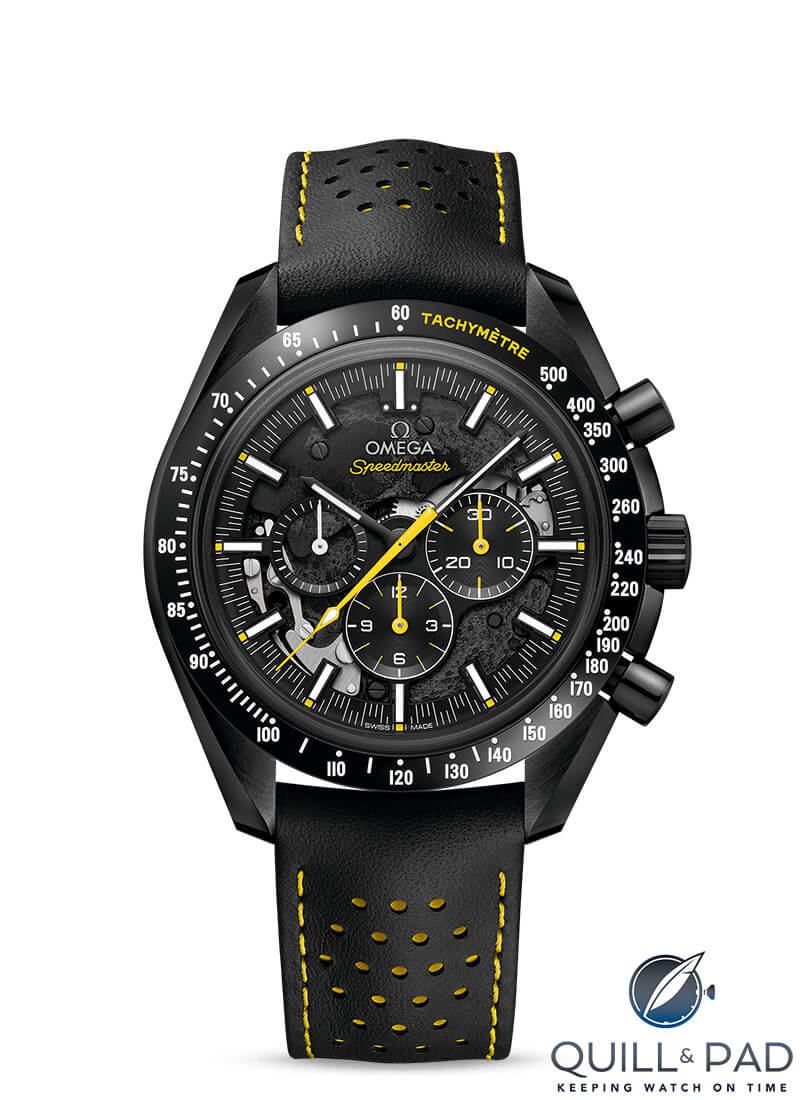
Omega Speedmaster Dark Side Of The Moon Apollo 8
Almost all of the visible plates and bridges have been laser ablated (a form of laser engraving) to resemble the surface of the moon. Ablation usually sees multiple passes with the laser to achieve significant depth of engraving, and the texture on the plates is rather impressive.
The bumps and valleys look very tactile, and it is almost sad that they are locked away in a case, kept from your fingertips and a desire to trace the lunar seas and impact craters dotting the surface.
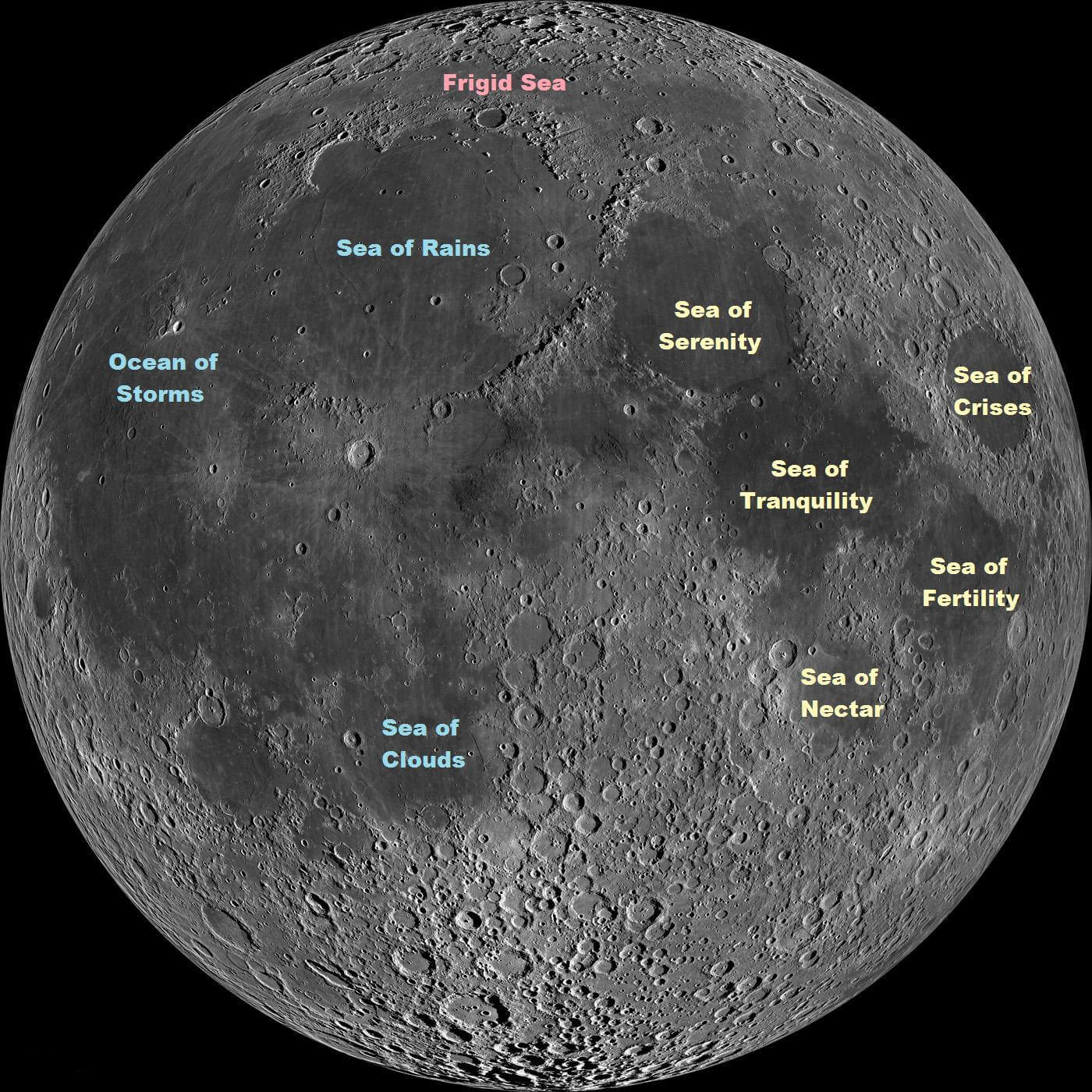
Features on the moon (image courtesy www.stardate.org)
The front of the watch might look a bit familiar to occasional star gazers because its engraved features are copied directly from the side of the moon we see, with the Sea of Serenity (Mare Sereritatis) and the Sea of Showers (Mare Imbrium) clearly visible around the Speedmaster logo. The famous Sea of Tranquility (Mare Tranquillitatis), where Apollo 11 landed, is located under the 30-minute counter, so that didn’t make the cut.
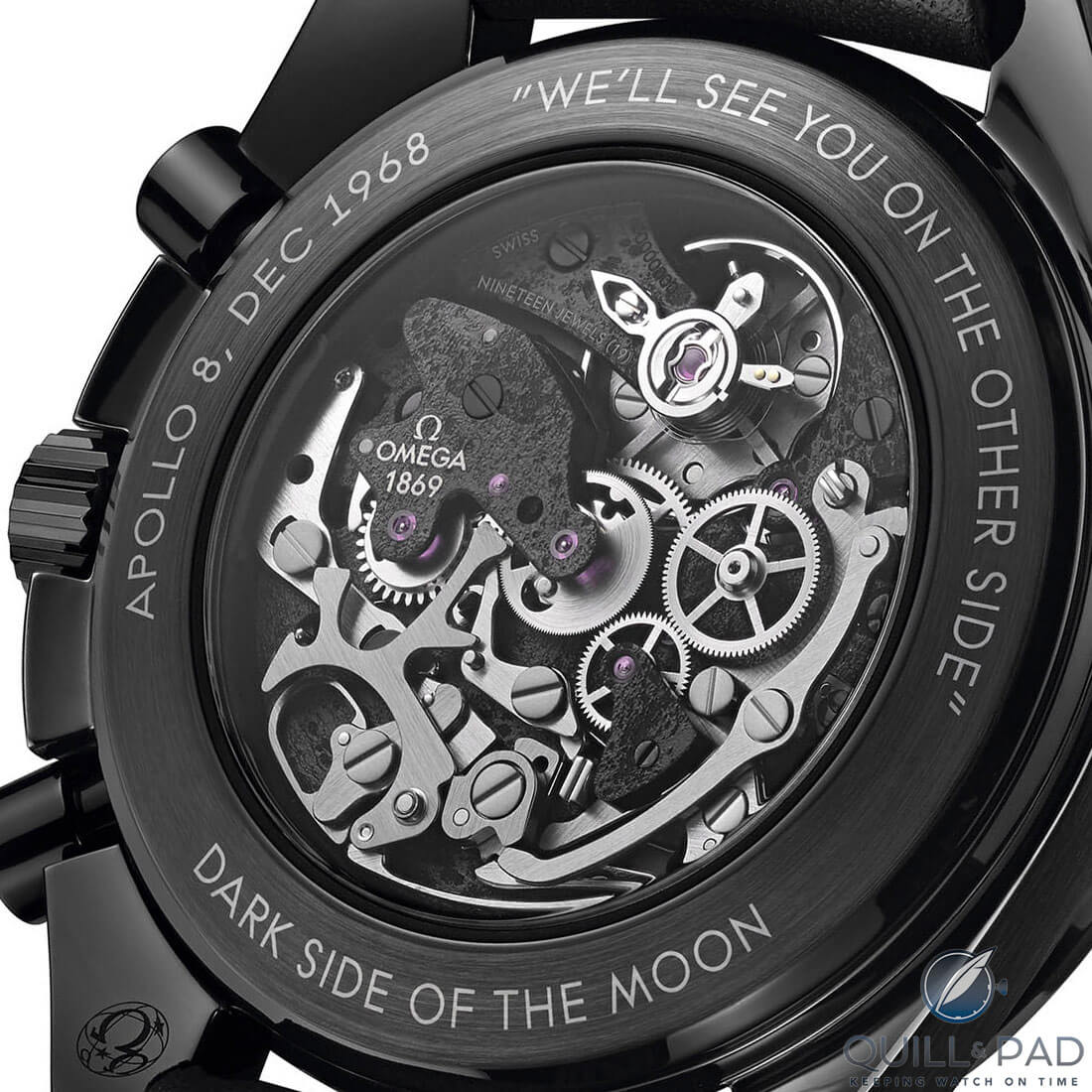
View of the back of the Omega Speedmaster Dark Side Of The Moon Apollo 8
The rear of the movement features different engraving, a meticulous representation of the far side of the moon where the surface is much more mottled from impact craters, but larger features are absent. Since the rear of the watch is usually only for the owner (or whomever the owner chooses to show it to), it is appropriate that the far side of the moon be depicted as only the Apollo astronauts will have seen it with their own eyes.
Subtle symbolism like this should not be overlooked when critiquing a commemorative timepiece.
Mechanics return to form
And the same goes for the choice to include the less sophisticated, manually winding Caliber 1869, a movement true to the original Speedmaster Professional watches in design and function. Since the original watches didn’t see an automatic movement for decades (at least in the Professional range) that really only left one choice.
And, yet, nothing about the Apollo 8 edition feels dated or stuck in a different decade. This Speedmaster is clearly a modern timepiece in style, finishing, and materials. The black ceramic and black movement are stunning, and the multilevel lunar surfaces that peak out from every corner of the movement add incredible depth to the watch. It is almost like you are witnessing a Transformer moon changing from one configuration to another.
This makes the watch feel alive with energy instead of static and stale, something that a watch commemorating space exploration definitely should hope to achieve. Obviously, a lot of restraint has been shown in the skeletonization department, illustrating the ambition not to make a minor adjustment with a color update and a random name slapped across the front.
Watches like that come from every brand out there, and if it is in limited edition format then it’s understandable. But when a watch becomes part of the regular collection then it says something about the intentions of the brand as a whole.
The DSOTM Apollo 8 is a special, but not limited, edition that joins the Speedmaster family hopefully as the first step along a new road of the story of Omega. The brand has been a part of space history ever since the Gemini missions, and it has been staying relatively close to those origins ever since. At least where the Speedmaster is concerned.
This might be why the Apollo 8 is a highly contentious Speedmaster edition: it is significantly different than the historical design from the 1960s. Staying true to the original is highly prized and well rewarded within the vintage community. All original parts, non-refinished cases, or repairs with only NOS components makes a collector one happy buyer.

Omega Speedmaster Dark Side Of The Moon Apollo 8 on the wrist
And it isn’t just that; it’s familiarity too. If something doesn’t remind you of what it’s “supposed” to, then it isn’t authentic to your memory, and the illusion of value is broken.
But explorers don’t care about that. Explorers simply want what is best for their mission and what they can rely on.
Let’s face it: if the Gemini and Apollo missions had begun after the Casio G-Shock had been invented, the Speedmaster probably would just be another cool chronograph but have no claim to space fame.
This new style feels like it could be a firm direction for further space exploration pieces – possibly including Mars, Venus, or Pluto-themed pieces or even the moons of Jupiter or Saturn to commemorate the missions in our own future.
The Speedmaster Dark Side Of The Moon Apollo 8 edition is one step for Omega, and it was part of one step for mankind. I personally love the direction and can’t wait to see if the brand continues with this path on other pieces or if this process for movement engraving starts showing up in other timepieces across the industry.
One thing is for certain: any watch that commemorates mankind’s greatest adventure, the exploration of the universe, is something that I will feel very strongly about. But the story of human exploration is still being written, and this watch is a single line in that grand saga, one that will whiz by in the retelling.

Omega Speedmaster Dark Side Of The Moon Apollo 8
So I say let’s enjoy it while it’s being written, while we are living it, and be happy we are here to see it happen. And let’s look forward to more!
And on to the next part of the story, the breakdown!
- Wowza Factor * 8.6 That’s an impressive moon you have there!
- Late Night Lust Appeal * 101.01 » 990.569m/s2 The moon is best viewed at night, so of course this thing will keep you up till the wee hours!
- M.G.R. * 54.3 The culmination of decades of improvement on a classic manual wind chronograph: heck yeah, it’s awesome!
- Added-Functionitis * Moderate Chronographs are super functional, so make sure you have some extra strength Gotta-HAVE-That cream for the lunar inspired awesomeness!
- Ouch Outline * 10.2 Pinched nerve in the neck! Sit and stare into a computer all day at the wrong angle or spend time hunched over something on the workbench and you may end up with something pinched. But I would gladly do that for days if it meant getting one of the DSOTM Apollo 8 pieces on my wrist!
- Mermaid Moment * Immediate (or 29.53 days)! Moons, man, they just reach me! And it won’t take long to fall head over heels and need to call a reverend!
- Awesome Total * 1,062 Take the Apollo mission it is commemorating (8) and multiply it by the diameter of the case (44.25) followed by the number of subdials (3) and the result is an out of-this-world awesome total!
For more information, please visit www.omegawatches.com.
Quick Facts Omega Speedmaster Dark Side Of The Moon Apollo 8
Case: 44.25 x 13.8 mm, zirconium oxide ceramic
Movement: manual winding Caliber 1869
Functions: hours, minutes, small seconds; chronograph
Price: $9,750
You might also enjoy:
Exceptional Movements In History: Caliber 321
Wrist Watching: Ryan Gosling Wears Omega Speedmaster In Upcoming ‘First Man’ Movie
Decoding Omega References: 14 Magic Digits And Codification Tables Revealed
Leave a Reply
Want to join the discussion?Feel free to contribute!



















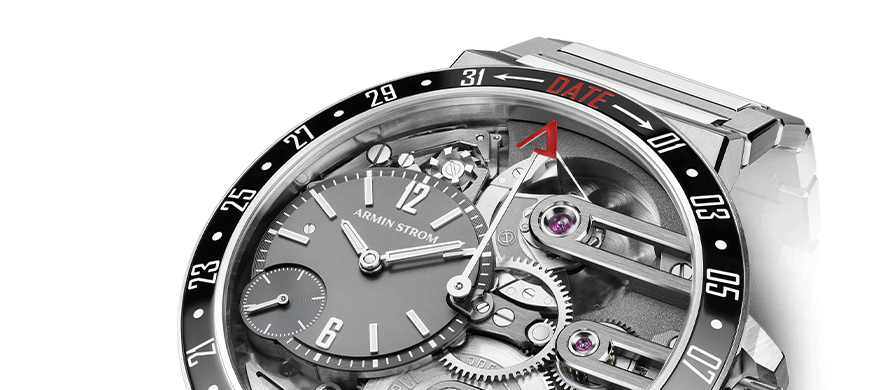
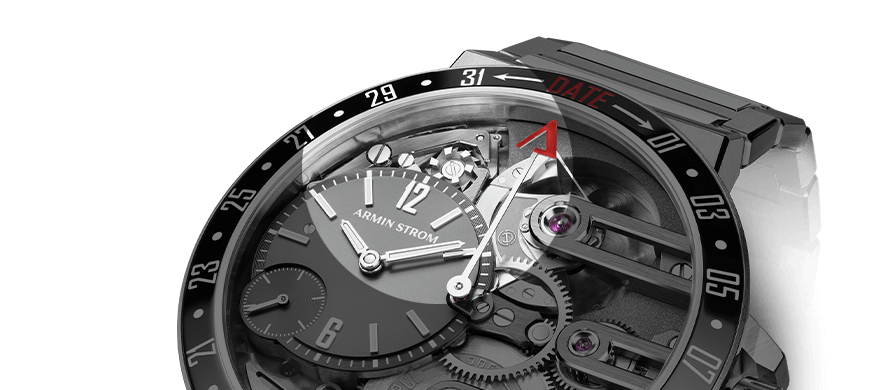


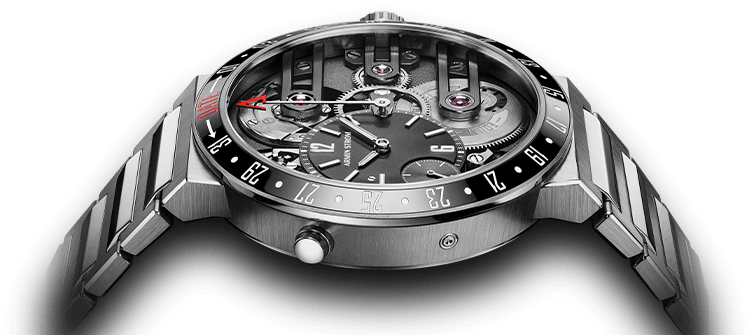


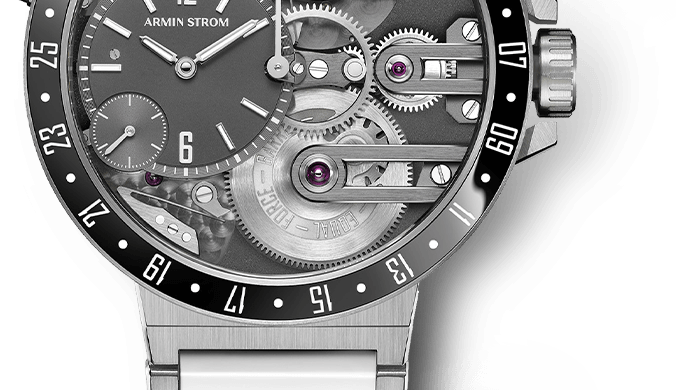





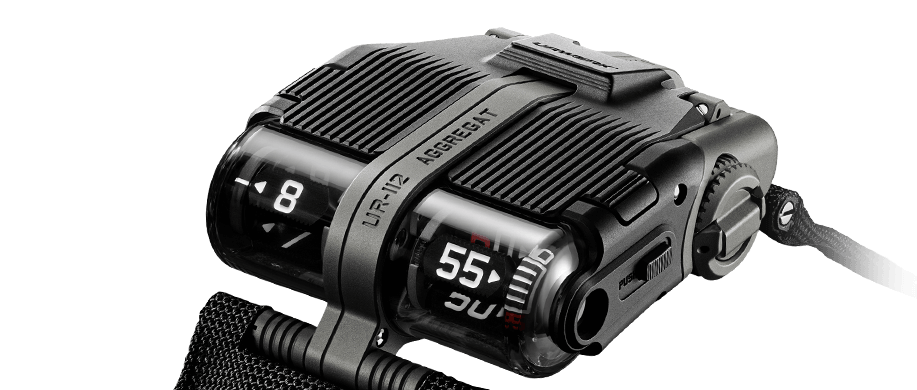

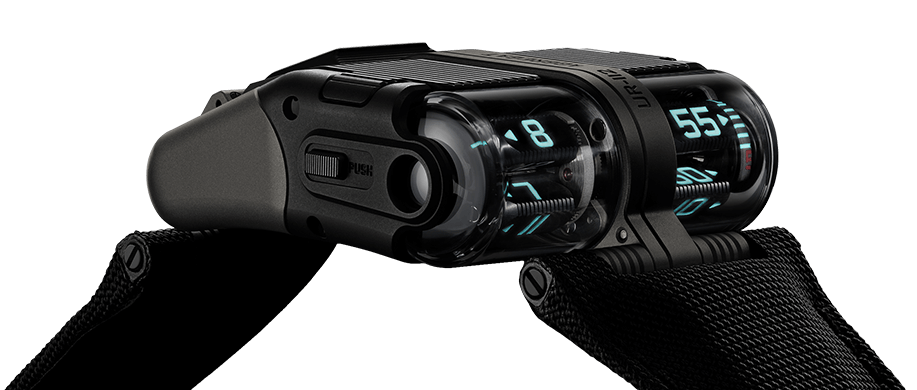














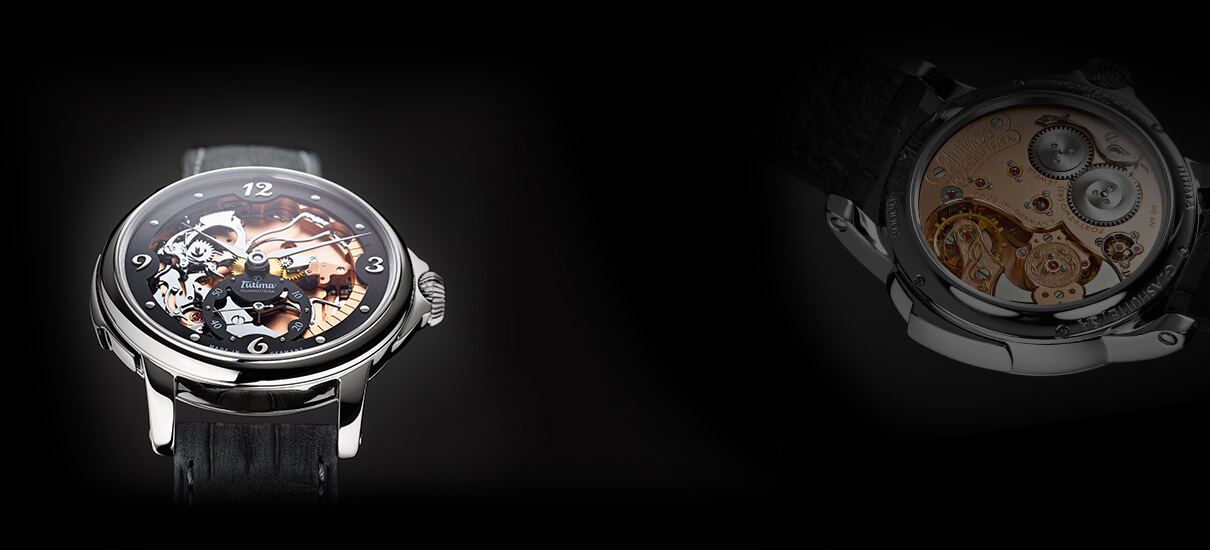



Love this. It’s the only non-Moonwatch Speedmaster I would buy (Alaska a possible exception).